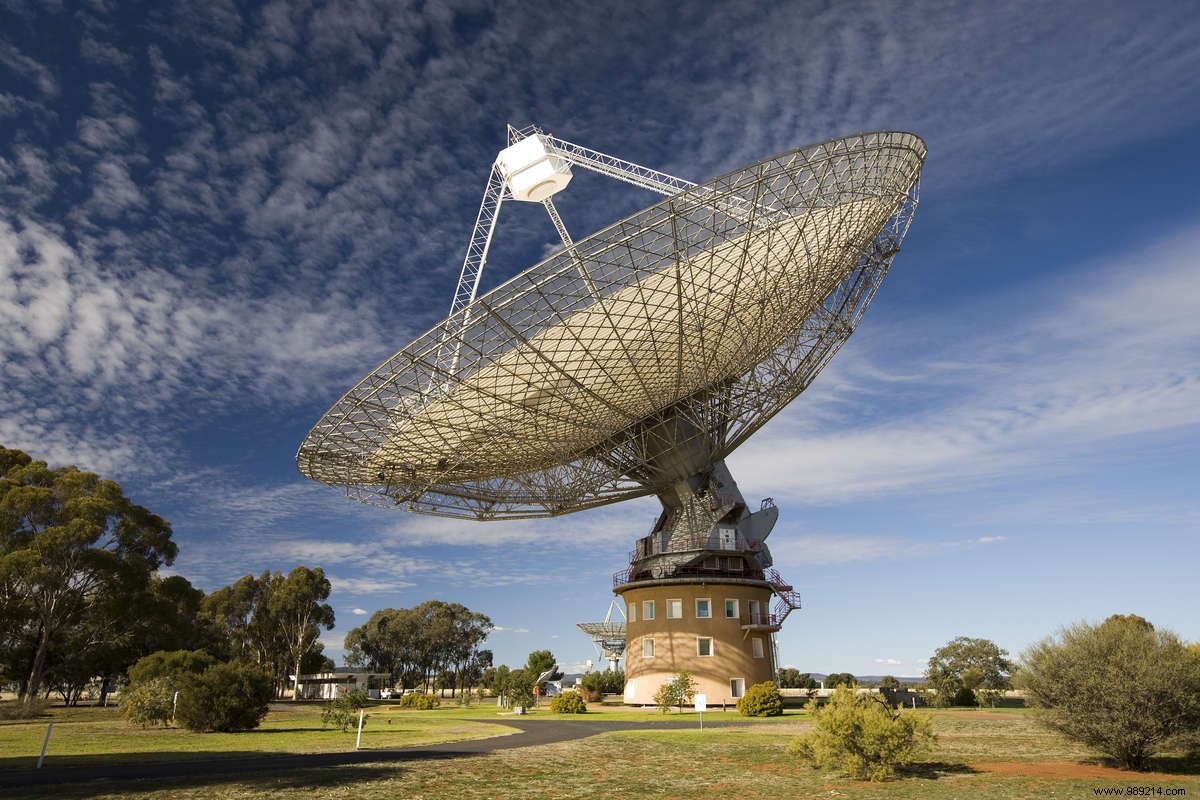Astronomers recently detected an "intriguing radio signal" apparently coming from Proxima Centauri, the closest star system to the sun, reports The Guardian. For now, astronomers are still trying to determine its origin.
Found about 4.2 light-years away, Proxima Centauri is the closest star to the Sun. In 2016, astronomers from the European Southern Observatory announced the presence of a planet in orbit around this star, now called Proxima Centauri b. This system interests astronomers for the simple and good reason that this world evolves in the so-called "habitable" zone of its star. Thus, since its discovery, several studies have been carried out with the aim of determining whether or not Proxima b could harbor life. Hence the interest of this new research, the details of which are reported by The Guardian.
In recent work, astronomers using the Parkes Telescope in Australia claim to have isolated a narrow beam of 982 MHz radio waves in 2019. As a reminder, this telescope integrates the Breakthrough Listen project, led by the Russian tycoon Yuri Milner, which aims to search for the presence of extraterrestrial techno-signatures.
According to this report, this signal was picked up during a 26-hour observation campaign from the Proxima Centauri system , and would have appeared once before disappearing. Another interesting point:the signal would have "changed" slightly while it was observed.
Note that to "pique the interest" of these "alien hunters", a signal must first undergo a series of automated tests to rule out any obvious terrestrial interference . Candidate signals routinely pass these tests, and most are usually quickly dismissed as "mirages" or "errors." But not this one.
The famous Scientific American magazine also spoke with the astronomers behind the discovery. The latter warn that there is still a lot of work to be done, but admit that the interest is justified. "It has (the signal, editor's note) special properties that caused it to pass many of our checks, and we can't explain it yet “, explains Andrew Siemion, of the University of California at Berkeley.

This frequency of 982 MHz is particularly intriguing in that this very precise band of radio waves is usually released by man-made satellites. “We know of no natural way to compress electromagnetic energy into a single frequency bin like this “, continues the astronomer. "Perhaps an exotic yet unknown quirk of plasma physics could be a natural explanation for these extremely concentrated radio waves" , he said. “But at the moment, the only source we know of is of technological origin “.
The Guardian also cites an anonymous source with access to data on this signal. “This is the first serious candidate for extraterrestrial communication from the "Wow!" », a famous radio signal detected in 1977 which also looked like a technosignature “.
That said, the "earth interference" explanation has obviously not yet been completely ruled out by researchers, which still raises the possibility that this signal actually a much less exotic origin. And to calm things down once again, let's remember that a recent weather report from our nearest stellar neighbor suggests that life probably has no chance of developing around it.